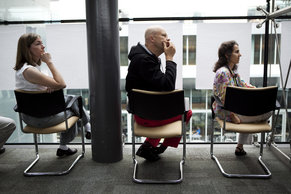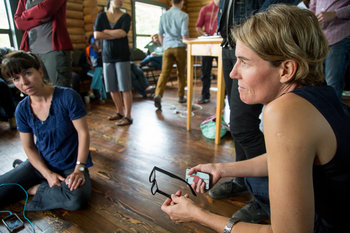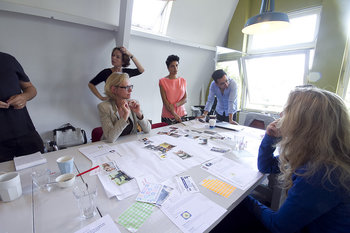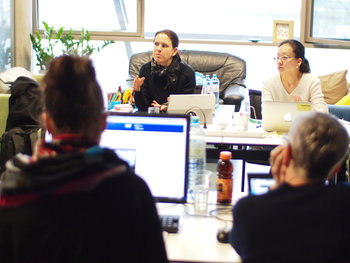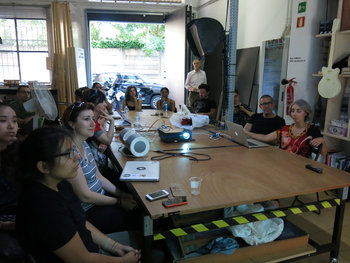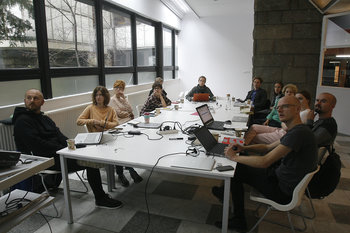
Division of workDividing work into specialized tasks that require specialized skills to increase productivity, efficiency and quality. | Business as usualIn the midst of disruption, problems and rapidly evolving change keep your core business running as normally as possible i.e. don't panic and shut everything down. |
Interchangeable partsUse standard things that can be replaced quickly i.e. try not to depend on unique and irreplaceable things. | Unity of commandThe management team of an organization cooperate in the interests of the organization e.g. no empire building. |
Unity of directionManagement issue clear direction to employees that isn't absurdly paradoxical. | Chain of commandAuthority is clear allocated and employees are expected to follow orders. |
Chain of accountabilityAccountability is tied to authority. Blame can't be shifted to those without power. | Latent human errorHuman error is designed out. Blaming human error is indicative of a lack of accountability. |
Subordination of individual interestOrganizations pursue common goals. This generally requires individual sacrifice. | Division of powerTeams and individuals need the right amount of authority to complete their work. |
Fit for purposeThe quality of things, including internal processes, should be suited to their purpose. Excessive quality such as perfectionism may be required for high value work but not for low value work. | Disagree and commitThere is a time to speak your mind and a time to get behind a strategy that has been adopted by management. |
Customer obsessionDoing what's best for the customer as a first principle. | OwnershipIt's not acceptable to say "that's not my job." Help to move things forward. |
Structure follows strategyThe structure of an organization, such as a hierarchy, is a crucial element of strategy. Never build an org structure based on office politics but rather based on what the organization is trying to achieve. | Essential complexityMake things exactly as complex as they need to be. Avoid senseless minimalism and complexity for the sake of complexity. |
Keep it simpleAvoid the common tendencies to overthink, overplan, oversocialize decisions and overengineer things. | Law of holesIf you find yourself in a hole, stop digging. Recognize failure and try to learn from it or find value in it. |
Fail wellTest ideas with experiments that fail quickly, cheaply and safely. | Fail oftenFrequently experiment and take calculated risks. A lack of failure is a hallmark of mediocrity. |
Segregation of dutiesStrategically divide duties to prevent misuse of power. | Least privilegeAvoid granting more authority and authorization than is required to achieve objectives. |
Radical transparencyAvoid needless secrecy. If your power or competitive advantage is based on secrecy, this is pretty weak. | Management by walking aroundManagers are visible at every level of an organization. |
Heliotropic effectBuild people up and expect much of them and they might deliver. | Productive assumptionsAssumptions don't need to be accurate as much as they need to help you achieve objectives. |
Pareto principleThe rule of thumb that the first 20% of work can produce 80% of value. | Ship oftenThe principle that you deliver value frequently in small chunks. |
Minimum viable productGetting things in front of the customer, client and user as quickly as possible to improve it. | Creative tensionThe principle that social tension such as arguments improve creativity. Avoid mediocrity in the name of social harmony. |
There's more than one way to do itThere is no perfect approach, just many good approaches. | Contingency theoryManagers need not have a single style as it's more rational to adapt your style to the situation. |
Last responsible momentThe principle that you not make decisions or complete work until it is really required. | Worse is betterThe observation that removing things can add value. For example, removing steps from a process. |
Think global act localThe principle that you think-through the full impacts of your actions on the world. | Preserving ambiguityAvoid making assumptions too early. |
Critical massThere is a size or volume that is required to be efficient. | Regression toward the meanUsual events and results tend to normalize. |
Eliminate wasteEliminate needless materials, energy use, work and cost. | Genchi genbutsuA Japanese management principle often translated "go and see." Suggests that managers need to understand all the roles, processes and projects under their authority. |
KaizenContinually improve all things. | Long-term PhilosophyChange often but root things in a long term philosophy. |
Visual problemsDesign things so that problems become immediately apparent. | JidokaAutomation is understood and monitored by accountable humans. |
Safety firstAll employees have authority to stop processes that aren't safe. | HeijunkaA steady workload is preferable to peaks and valleys. |




